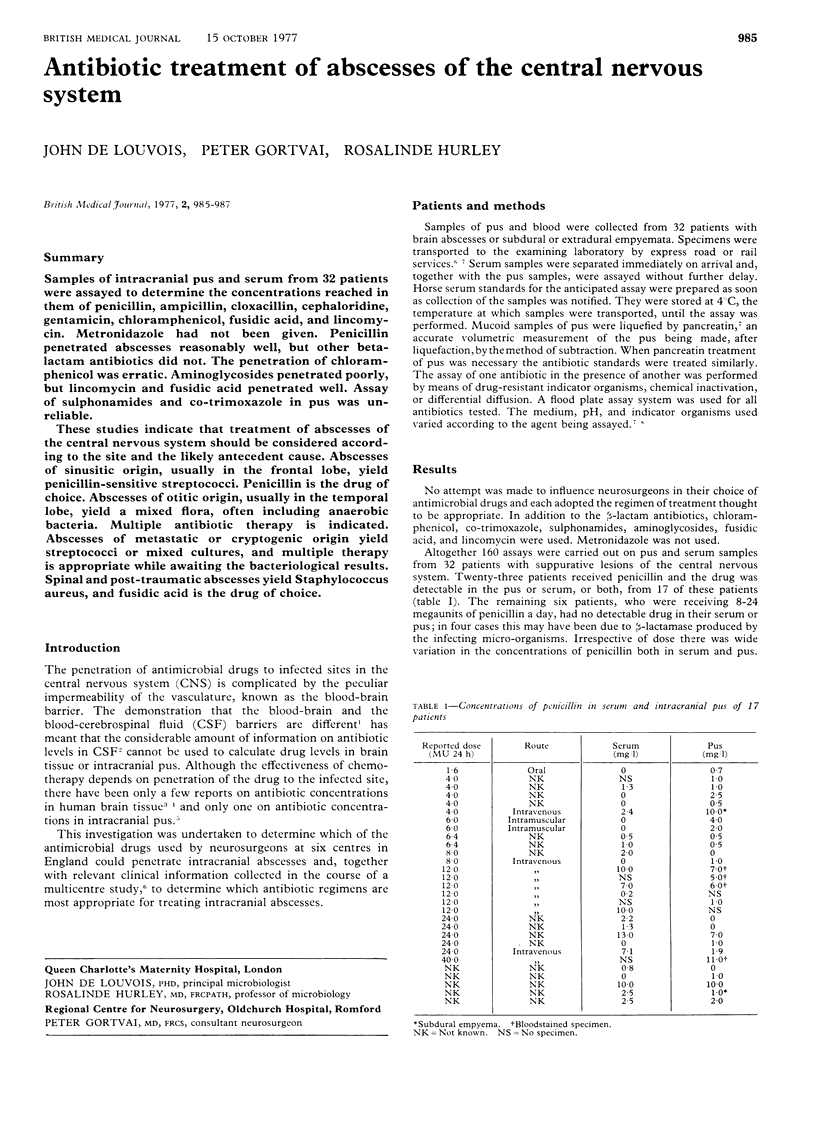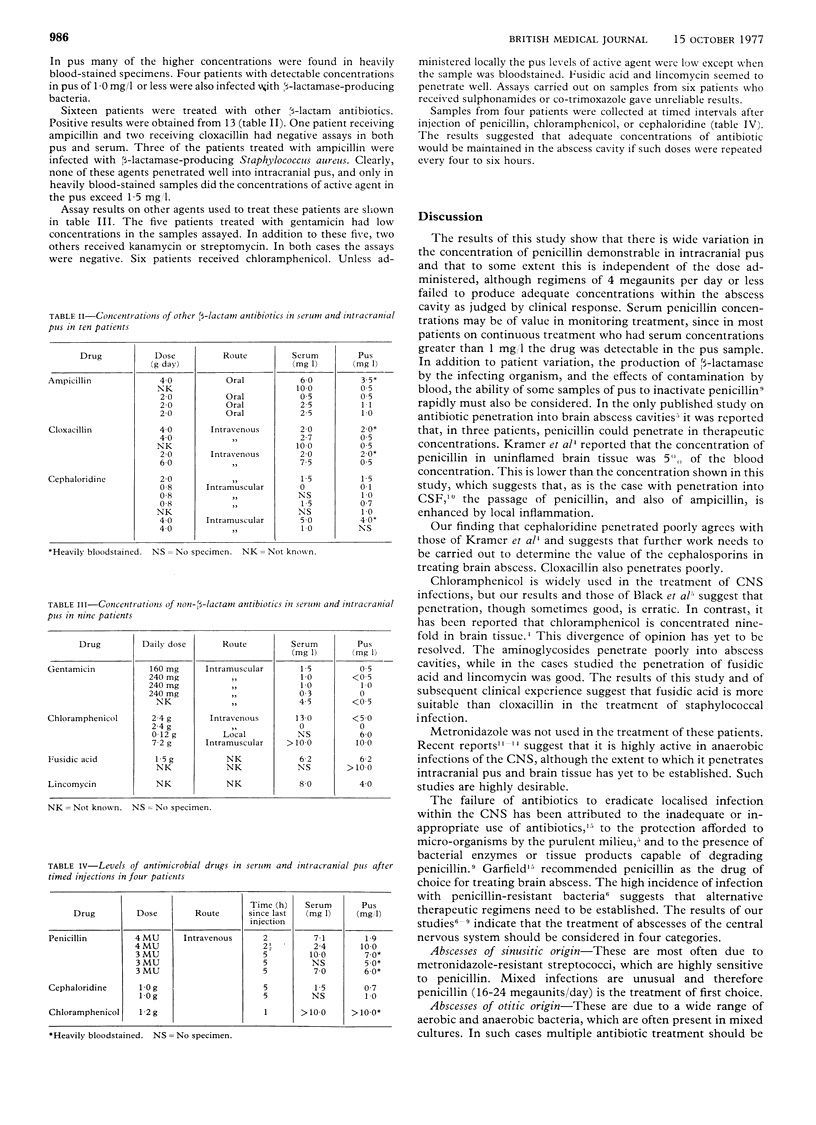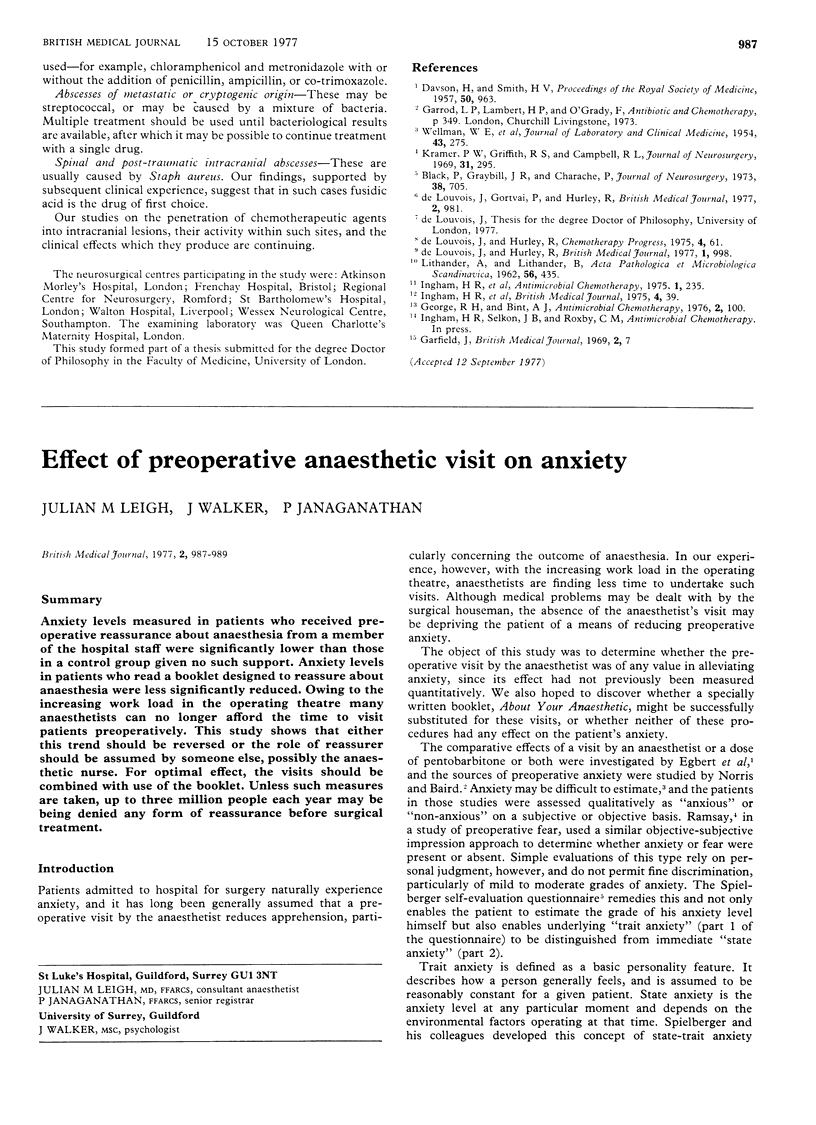Abstract
Samples of intracranial pus and serum from 32 patients were assayed to determine the concentrations reached in them of penicillin, ampicillin, cloxacillin, cephaloridine, gentamicin, chloramphenicol, fusidic acid, and lincomycin. Metronidazole had not been given. Penicillin penetrated abscesses reasonably well, but other beta-lactam antibiotics did not. The penetration of chloramphenicol was erratic. Aminoglycosides penetrated poorly, but lincomycin and fusidic acid penetrated well. Assay of sulphonamides and co-trimoxazole in pus was unreliable. These studies indicate that treatment of abscesses of the central nervous system should be considered according to the site and the likely antecedent cause. Abscesses of sinusitic origin, usually in the frontal lobe, yield penicillin-sensitive streptococci. Penicillin is the drug of choice. Abscesses of otitic origin, usually in the temporal lobe, yield a mixed flora, often including anaerobic bacteria. Multiple antibiotic therapy is indicated. Abscesses of metastatic or cryptogenic origin yield streptococci or mixed cultures, and multiple therapy is appropriate while awaiting the bacteriological results. Spinal and post-traumatic abscesses yield Staphylococcus aureus, and fusidic acid is the drug of choice.
Full text
PDF


Selected References
These references are in PubMed. This may not be the complete list of references from this article.
- Black P., Graybill J. R., Charache P. Penetration of brain abscess by systemically administered antibiotics. J Neurosurg. 1973 Jun;38(6):705–709. doi: 10.3171/jns.1973.38.6.0705. [DOI] [PubMed] [Google Scholar]
- DAVSON H., SMITH H. V. Physiological aspects of the penetration of drugs into the cerebrospinal fluid. Proc R Soc Med. 1957 Nov;50(11):963–966. doi: 10.1177/003591575705001118. [DOI] [PMC free article] [PubMed] [Google Scholar]
- Kramer P. W., Griffith R. S., Campbell R. L. Antibiotic penetration of the brain. A comparative study. J Neurosurg. 1969 Sep;31(3):295–302. doi: 10.3171/jns.1969.31.3.0295. [DOI] [PubMed] [Google Scholar]
- LITHANDER A., LITHANDER B. The passage of penicillin into the cerebrospinal fluid after parenteral administration in staphylococcic meningitis. 1. An experimental investigation on rabbits. Acta Pathol Microbiol Scand. 1962;56:435–450. doi: 10.1111/j.1699-0463.1962.tb04196.x. [DOI] [PubMed] [Google Scholar]
- de Louvois J., Gortavai P., Hurley R. Bacteriology of abscesses of the central nervous system: a multicentre prospective study. Br Med J. 1977 Oct 15;2(6093):981–984. doi: 10.1136/bmj.2.6093.981. [DOI] [PMC free article] [PubMed] [Google Scholar]


